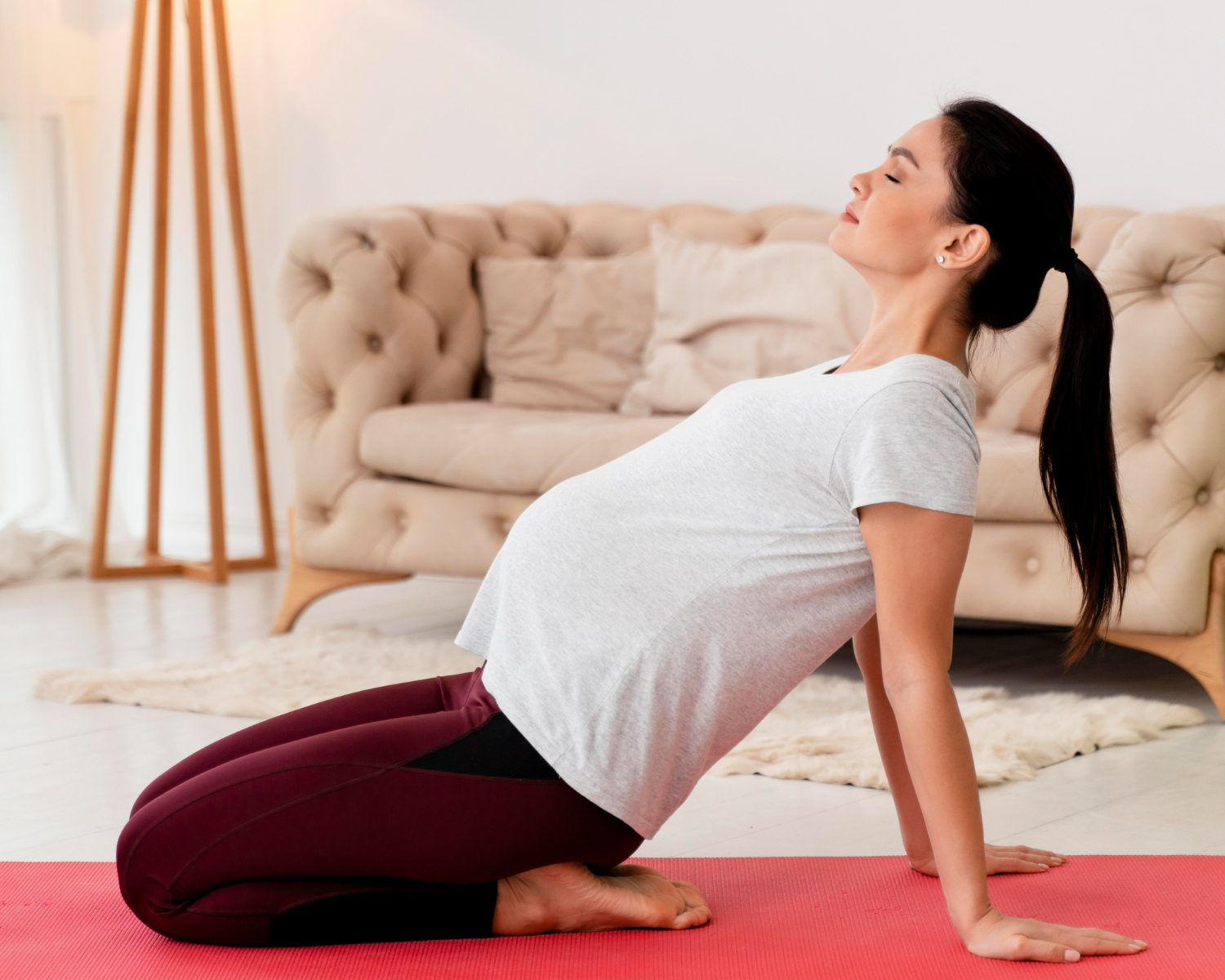Introduction:
Pregnancy is a memorial journey, and as expectant mothers prepare for the arrival of their baby, it’s important to focus on both physical and mental well-being. One holistic approach that has gained popularity for promoting a smooth and natural delivery is the practice of yoga. With its gentle yet powerful asanas (poses) and breathing techniques, yoga can help pregnant mothers build strength, flexibility, and a positive mindset. In this comprehensive guide, we will explore some beneficial yoga asanas specifically tailored to support normal delivery.
Tadasana (Mountain Pose):
Begin your prenatal yoga routine with Tadasana, a foundational pose that helps improve posture and balance. Stand with your feet together, arms by your sides, and palms facing forward. Inhale deeply, extending your arms overhead, and lift onto your toes. This pose strengthens the pelvic muscles and promotes proper alignment, preparing the body for the birthing process.
Benefits:
- Strengthens pelvic muscles and improves posture.
- Enhances balance and stability.
- Promotes proper alignment, preparing the body for childbirth.
- Fosters a centered and focused mind through grounding exercises.
Baddha Konasana (Butterfly Pose):
Sit on the floor with your feet together and knees apart, resembling the wings of a butterfly. Gently flap your knees up and down, opening the hips and stretching the inner thighs. This asana helps in reducing tension in the pelvic region and is excellent for maintaining flexibility.
Benefits:
- Reduces tension in the pelvic region.
- Opens up the hips and stretches the inner thighs.
- Maintains flexibility, crucial for a smooth & normal delivery.
- Stimulates blood circulation, promoting a healthy pelvic environment.
Cat-Cow Stretch:
This dynamic duo of poses helps improve flexibility in the spine and pelvis. Start on your hands and knees in a tabletop position, then breathe in as you arch your back (cow pose), and breathe out as you round your spine (cat pose). Repeat this flow to promote a healthy range of motion in the pelvic area.
Benefits:
- Improves flexibility in the spine and pelvis.
- Promotes a healthy range of motion in the pelvic area.
- Encourages optimal fetal positioning for childbirth.
- Eases lower back discomfort through dynamic movement.
Malasana (Garland Pose):
Malasana is a deep squat that opens up the pelvic area, stretches the lower back, and strengthens the thighs. Stand with your feet wider than hip-width apart, toes pointing outward. Lower your hips down, bringing your palms together in front of your chest. This asana encourages the baby to move into the proper position for delivery.
Benefits:
- Deep squat opens up the pelvic area.
- Stretches the lower back and strengthens the thighs.
- Encourages the baby to move into the proper position for delivery.
- Alleviates lower back pain and enhances pelvic circulation.
Sukhasana (Easy Pose) with Pranayama:
Sitting cross-legged, practice deep breathing exercises or pranayama. Breathing techniques, such as diaphragmatic breathing, can help reduce stress and anxiety, promoting a calm and centered mind. Incorporate deep, mindful breaths to enhance your lung capacity and oxygenate your body.
Benefits:
- Provides a comfortable seated position for pranayama.
- Reduces stress and anxiety through mindful breathing.
- Enhances lung capacity and oxygenates the body.
- Cultivates a positive mindset, crucial for a smooth delivery.
Virabhadrasana II (Warrior II Pose):
This powerful pose helps strengthen the legs, open the hips, and build stamina. Stand with your legs wide apart, extend your arms parallel to the floor, and gaze over your front hand. Virabhadrasana II improves focus and endurance, essential qualities during labor.
Benefits:
- Strengthens the legs, opens the hips, and builds stamina.
- Improves focus and endurance, essential during labor.
- Engages the entire lower body for optimal childbirth support.
- Encourages mental concentration through focused gaze.
Utkatasana (Chair Pose):
Utkatasana, or chair pose, is excellent for toning the pelvic muscles and strengthening the lower back. Stand with your feet together, bend your knees, and lower your hips as if sitting in an imaginary chair. This asana enhances endurance and prepares the body for the demands of labor.
Benefits:
- Tones pelvic muscles and strengthens the lower back.
- Enhances endurance, preparing the body for labor demands.
- Activates thighs and glutes for a more controlled birthing experience.
- Engages key muscle groups supporting the pelvic region.
Anjaneyasana (Low Lunge):
A gentle lunge that stretches the hips and thighs, Anjaneyasana helps release tension in the pelvic area. Step one foot forward into a lunge, keeping the back knee on the ground. Lift your arms overhead and feel the stretch in your hip flexors. Switch sides to balance the stretch.
Benefits
- Stretches the hips and thighs, releasing tension in the pelvic area.
- Provides relief from pelvic region discomfort.
- Maintains flexibility and ease in the pelvic area.
- Prepares the body for childbirth by targeting hip flexors.
Conclusion:
As you embark on the beautiful journey of motherhood, incorporating these yoga asanas into your routine can contribute to a more comfortable pregnancy and a smoother, natural delivery. Remember to listen to your body, modify poses as needed, and consult with your healthcare provider before starting any new exercise regimen during pregnancy.
In addition to the physical benefits, prenatal yoga provides a precious opportunity for self-care and mindfulness. Cultivating a positive mindset, staying connected with your breath, and nurturing your body through yoga can contribute to a more joyful and empowered pregnancy experience. Embrace the transformative power of yoga as you prepare for the incredible adventure of childbirth.
